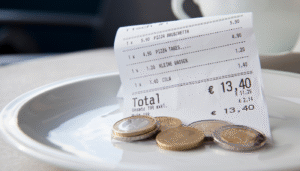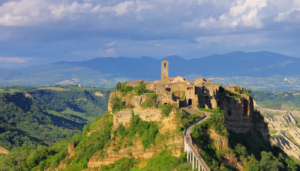When planning a trip to Italy, it’s important to consider how you will get around the country. There are several transportation options available in Italy, each with their own benefits and drawbacks. In this post, we’ll provide an overview of the various ways to get around Italy, as well as some tips and considerations to keep in mind.
Trains
Trains are often the most efficient way to travel between Italian cities, with high-speed “Frecciarossa” trains being the most convenient option. These trains can get you from Rome to Milan in just three hours, compared to the six hours it would take by car. While trains are generally the most efficient option, prices can vary depending on how early you book, with fares being cheaper the earlier you book. It’s worth noting that Italy has both a state-run train company (Trenitalia) and a private company (Italo), so it’s a good idea to compare prices and schedules before booking. In addition to the high-speed trains, there are also “Intercity” and “Regionale” trains that connect medium and smaller cities.
Cars
If you plan to explore small towns and the countryside, renting a car may be the best option. Driving in Italy has its pros and cons – it’s a great way to see more of the country, but it can also be challenging to find parking in cities and some people drive fast and recklessly, particularly in Rome and Naples. In addition, petrol is relatively expensive (around €1.60 per liter) and cars are generally manual transmission. It’s worth considering whether driving is the best option for you, depending on your destination and comfort level.
Flights
Domestic flights can be a good option for certain routes in Italy, particularly when traveling to the islands or between the far north and south of the country. Low-cost airlines offer a range of cheap flights, but it’s important to keep in mind that they often charge for extra luggage. Flights can be a good option if you are trying to save time, but it’s worth comparing prices with other modes of transportation before booking.
Buses
Buses are a newer mode of transportation in Italy and were previously only available in certain regions without a widespread railway system, particularly in the south. In recent years, companies like Flixbus and Itabus have developed a nationwide network, making it possible to go almost anywhere in the country by bus. Prices are often cheaper than the train or plane, but it is a slower mode of transportation and requires more time. Buses are a good option for reaching destinations in the south that don’t have a train station nearby.
Ferries
Ferries are a scenic and romantic way to travel, and they are also essential for reaching the islands off the coast of Italy, such as Capri and Ischia near Naples or Elba on the Tuscan Sea. There are also long-distance ferries to Sicily and Sardinia, but these journeys can take 8-12 hours, making a flight a more time-efficient option unless you are traveling with your own car.
In addition to these more common modes of transportation, you’ll find trams, funiculars, and motorbikes throughout the country. As always, your specific travel style and preferences will determine the best way to get around!
Looking for more guidance? That’s what we’re here for! We’ll advise on the best way to travel between and within your chosen destinations. Buon viaggio!



